Microwave Imaging Sensor Using Low Profile Modified Stacked Type Planar Inverted F Antenna
Abstract
:1. Introduction
2. Design and Methodology
3. Results and Discussion
4. Conclusions
Author Contributions
Funding
Conflicts of Interest
References
- Singh, N.; Mohacsy, A.; Connell, D.A.; Schneider, M.E. A snapshot of patients’ awareness of radiation dose and risks associated with medical imaging examinations at an Australian radiology clinic. Radiography 2017, 23, 94–102. [Google Scholar] [CrossRef] [PubMed]
- Lin, E.C. Radiation Risk from Medical Imaging. Mayo Clin. Proc. 2010, 85, 1142–1146. [Google Scholar] [CrossRef] [PubMed]
- Mulvihill, D.J.; Sachin, J.; John, B.K.; Sharad, G. Diagnostic Medical Imaging in Pediatric Patients and Subsequent Cancer Risk. Acad. Radiol. 2017, 24, 1456–1462. [Google Scholar] [CrossRef] [PubMed]
- Hendee, W.R.; O’Connor, M.K. Radiation risks of medical imaging: Separating fact from fantasy. Radiology 2012, 264, 312–321. [Google Scholar] [CrossRef] [PubMed]
- Hassan, N.A.; Mohamed, M.M.; Tayel, M.B. Basic evaluation of antennas used in microwave imaging for breast cancer detection. Comput. Sci. Inf. Technol. 2016, 55–63. [Google Scholar] [CrossRef]
- Zhao, X.; Zhuang, H.; Yoon, S.C.; Dong, Y.; Wang, W.; Zhao, W. Electrical impedance spectroscopy for quality assessment of meat and fish: A review on basic principles, measurement methods, and recent advances. J. Food Qual. 2017, 2, 1–16. [Google Scholar] [CrossRef]
- Rezaeieh, S.A.; Zamani, A.; Abbosh, A.M. Three Dimensional Wideband Antenna for Head Imaging System with Performance Verification in Brain Tumor Detection. IEEE Antennas Wirel. Propag. Lett. 2014, 14, 910–917. [Google Scholar] [CrossRef]
- Mobashsher, A.T.; Abbosh, A.M.; Wang, Y. Microwave system to detect traumatic brain injuries using compact unidirectional antenna and wideband transceiver with verification on realistic head phantom. IEEE Trans. Microw. Theory Tech. 2014, 62, 1826–1836. [Google Scholar] [CrossRef]
- Wang, L. Microwave Sensors for Breast Cancer Detection. Sensors 2018, 18, 655. [Google Scholar] [CrossRef] [PubMed]
- Mobashsher, A.T.; Abbosh, A.M. Compact 3-D Slot-Loaded Folded Dipole Antenna with Unidirectional Radiation and Low Impulse Distortion for Head Imaging Applications. IEEE Trans. Antennas Propag. 2016, 64, 3245–3250. [Google Scholar] [CrossRef]
- Al-Joumayly, M.A.; Aguilar, S.M.; Behdad, N.; Hagness, S.C. Dual-Band Miniaturized Patch Antennas for Microwave Breast Imaging. IEEE Antennas Wirel. Propag. Lett. 2010, 9, 268–271. [Google Scholar] [CrossRef] [PubMed] [Green Version]
- Rezaeieh, S.A.; Abbosh, A.M. Wideband and Unidirectional Folded Antenna for Heart Failure Detection System. IEEE Antennas Wirel. Propag. Lett. 2014, 13, 844–847. [Google Scholar] [CrossRef]
- Zamani, A.; Rezaeieh, S.A.; Abbosh, A.M. Frequency Domain Method for Early Stage Detection of Congestive Heart Failure. In Proceedings of the 2014 IEEE MTT-S International Microwave Workshop Series on RF and Wireless Technologies for Biomedical and Healthcare Applications (IMWS-Bio), London, UK, 8–10 December 2014. [Google Scholar]
- Rezaeieh, S.A.; Bialkowski, K.S.; Abbosh, A.M. Folding method for bandwidth and directivity enhancement of meandered loop ultra-high frequency antenna for heart failure detection system. IET Microw. Antennas Prop. 2014, 8, 1218–1227. [Google Scholar] [CrossRef]
- Li, X.; Jalilvand, M.; Sit, Y.L.; Zwick, T. A Compact Double-Layer On-Body Matched Bowtie Antenna for Medical Diagnosis. IEEE Trans. Antennas Propag. 2014, 62, 1808–1816. [Google Scholar] [CrossRef]
- Yarovoy, A.G.; Savelyev, T.G.; Aubry, P.J.; Lys, P.E.; Ligthart, L.P. UWB array-based sensor for near-field imaging. IEEE Trans. Microw. Theory Tech. 2007, 55, 1288–1295. [Google Scholar] [CrossRef]
- Ullah, M.A.; Alam, T.; Abdullah, S.; Mansor, M.F.; Misran, N.; Islam, M.T. A 3D unidirectional antenna for microwave application. In Proceedings of the 2017 Progress in Electromagnetics Research Symposium-Spring (PIERS), St. Petersburg, Russia, 22–25 May 2017. [Google Scholar]
- Chandra, R.; Zhou, H.; Balasingham, I.; Narayanan, R.M. On the opportunities and challenges in microwave medical sensing and imaging. IEEE Trans. Biomed. Eng. 2015, 62, 1667–1682. [Google Scholar] [CrossRef] [PubMed]
- Akhter, Z.; Akhtar, M.J. Hemisphere lens-loaded Vivaldi antenna for time domain microwave imaging of concealed objects. J. Electromagn. Waves Appl. 2016, 30, 1183–1197. [Google Scholar] [CrossRef]
- Mahmud, M.Z.; Islam, M.T.; Rahman, M.N.; Alam, T.; Samsuzzaman, M. A miniaturized directional antenna for microwave breast imaging applications. Int. J. Microw. Wirel. Technol. 2017, 9, 2013–2018. [Google Scholar] [CrossRef]
- Abbak, M.; Akıncı, M.N.; Ertay, A.O.; Özgür, S.; Işık, C.; Akduman, İ. Wideband compact dipole antenna for microwave imaging applications. IET Microw. Antennas Propag. 2017, 11, 265–270. [Google Scholar] [CrossRef]
- Amineh, R.K.; Ravan, M.; Trehan, A.; Nikolova, N.K. Near-field microwave imaging based on aperture raster scanning with TEM horn antennas. IEEE Trans. Antennas Propag. 2011, 59, 928–940. [Google Scholar] [CrossRef]
- Ouerghi, K.; Smida, A.; Ghayoula, R.; Boulejfen, N. Design and analysis of a microstrip antenna array for biomedical applications. In Proceedings of the 2017 International Conference on Advanced Technologies for Signal and Image Processing (ATSIP), Fez, Morocco, 22–24 May 2017. [Google Scholar]


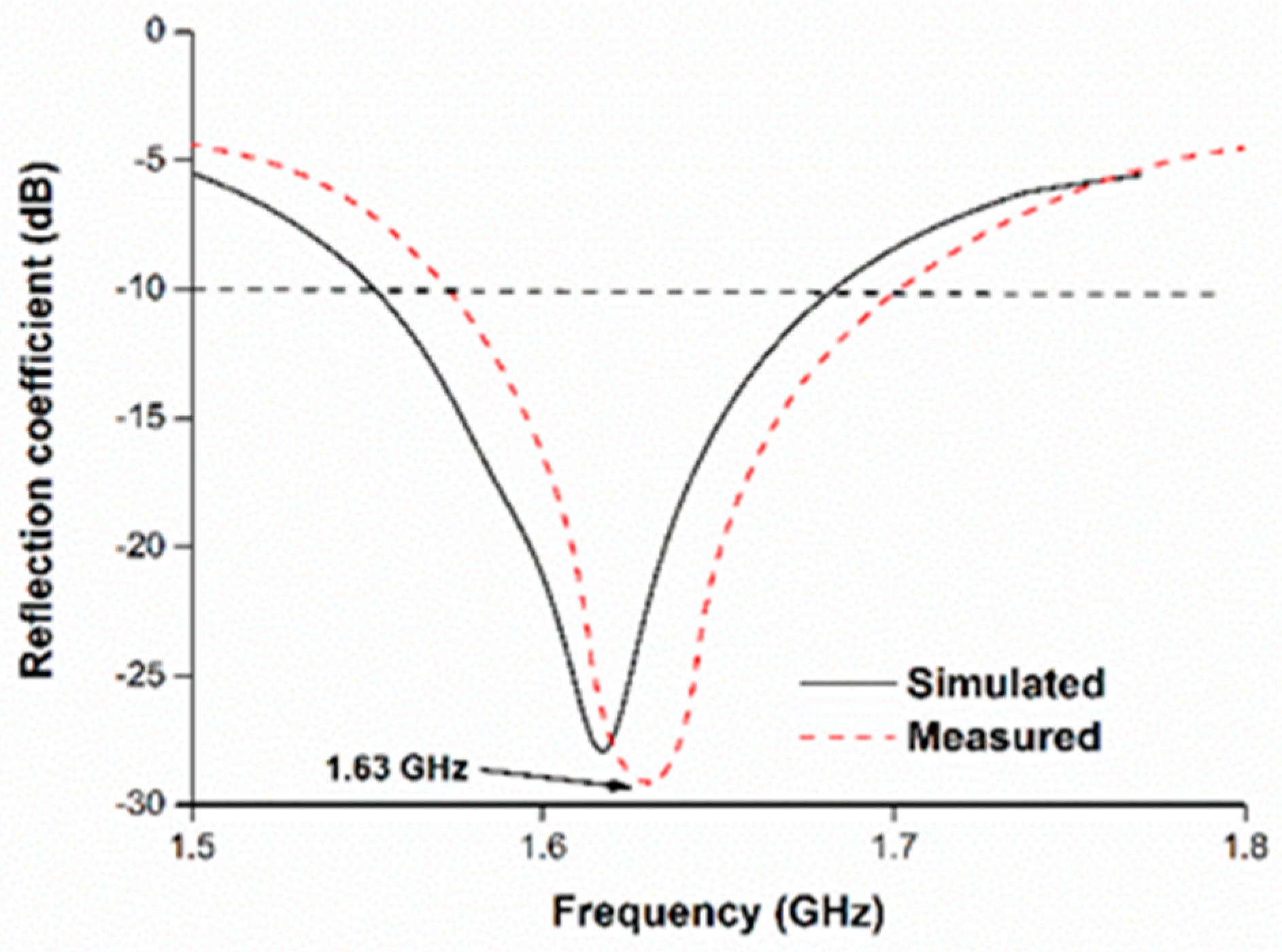

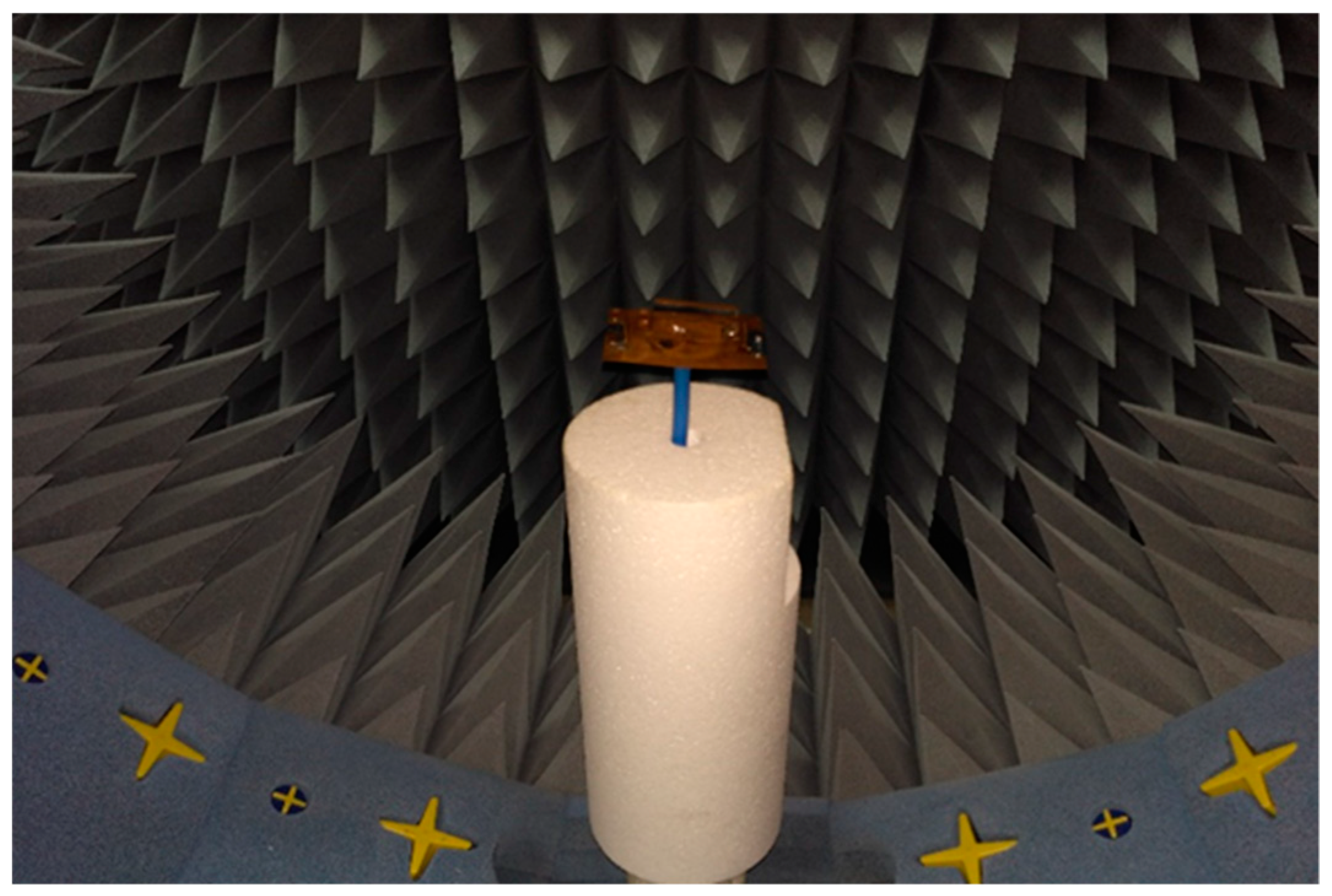
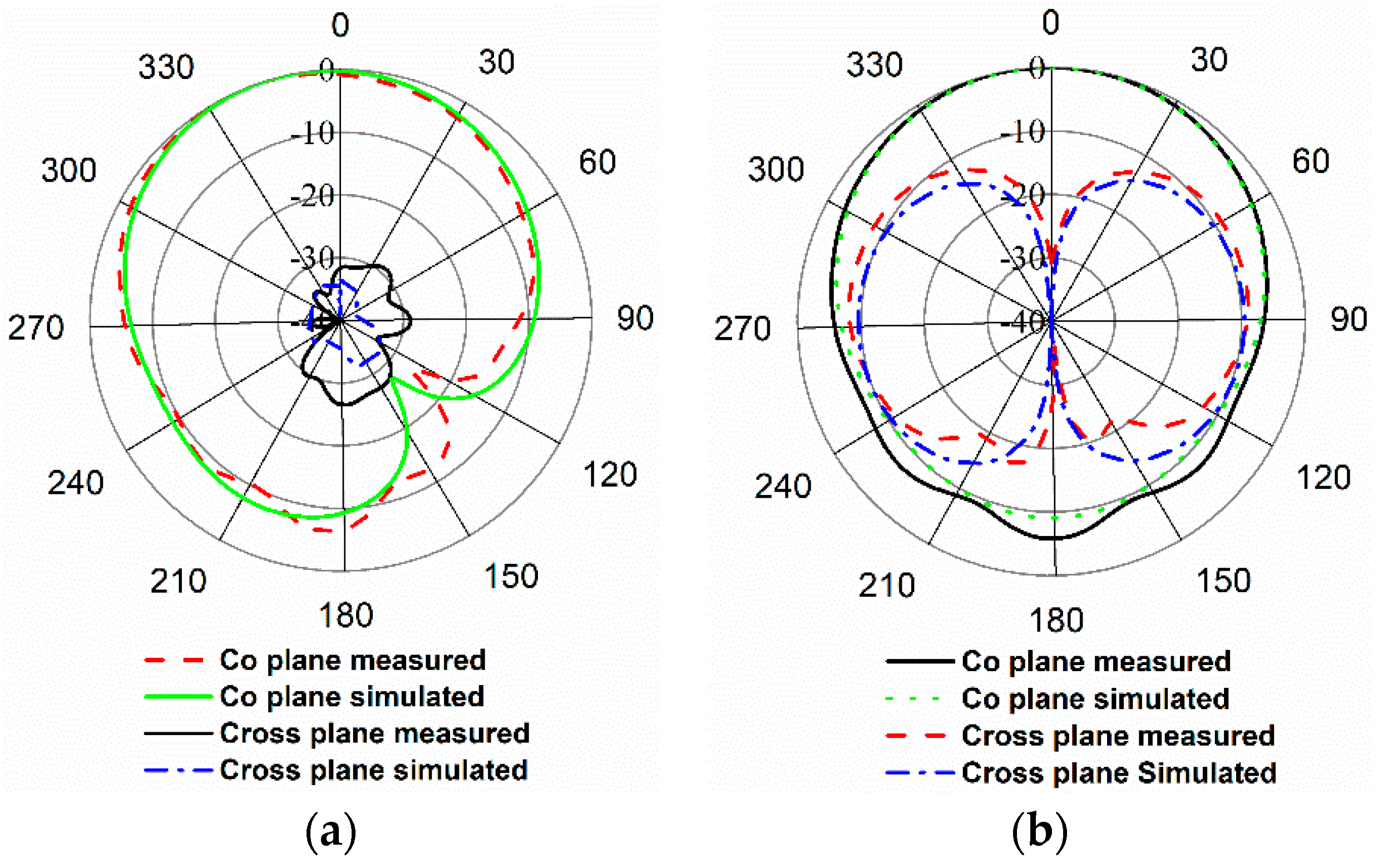
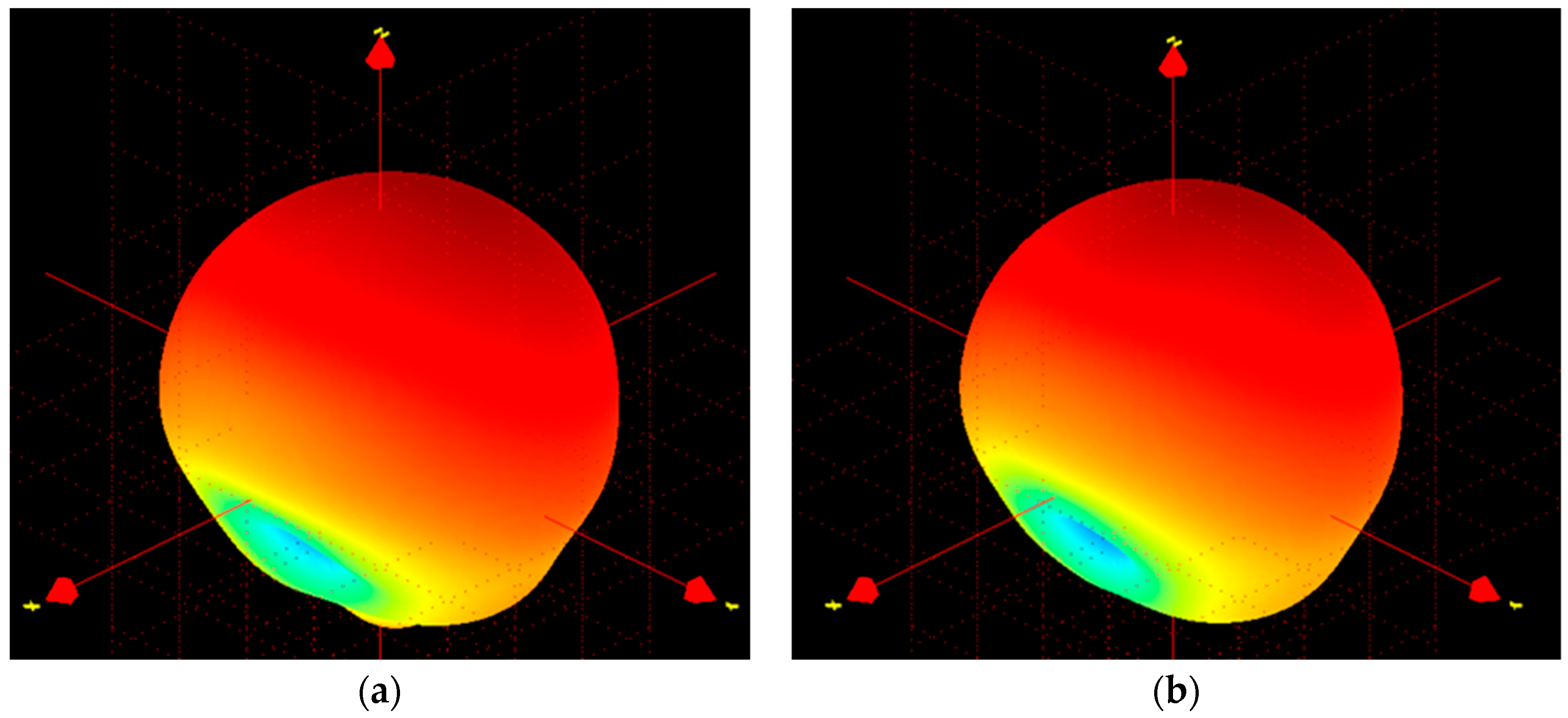
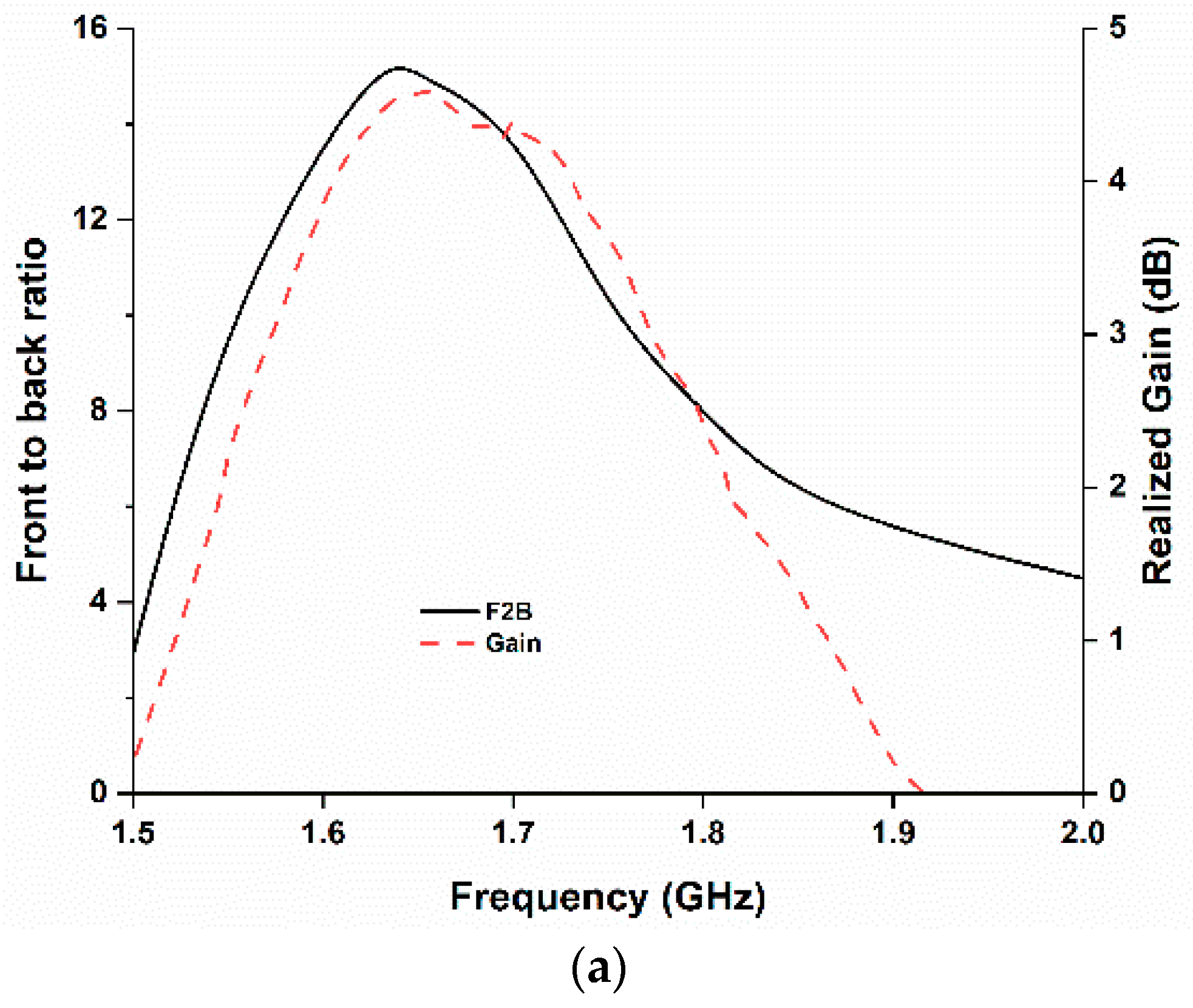


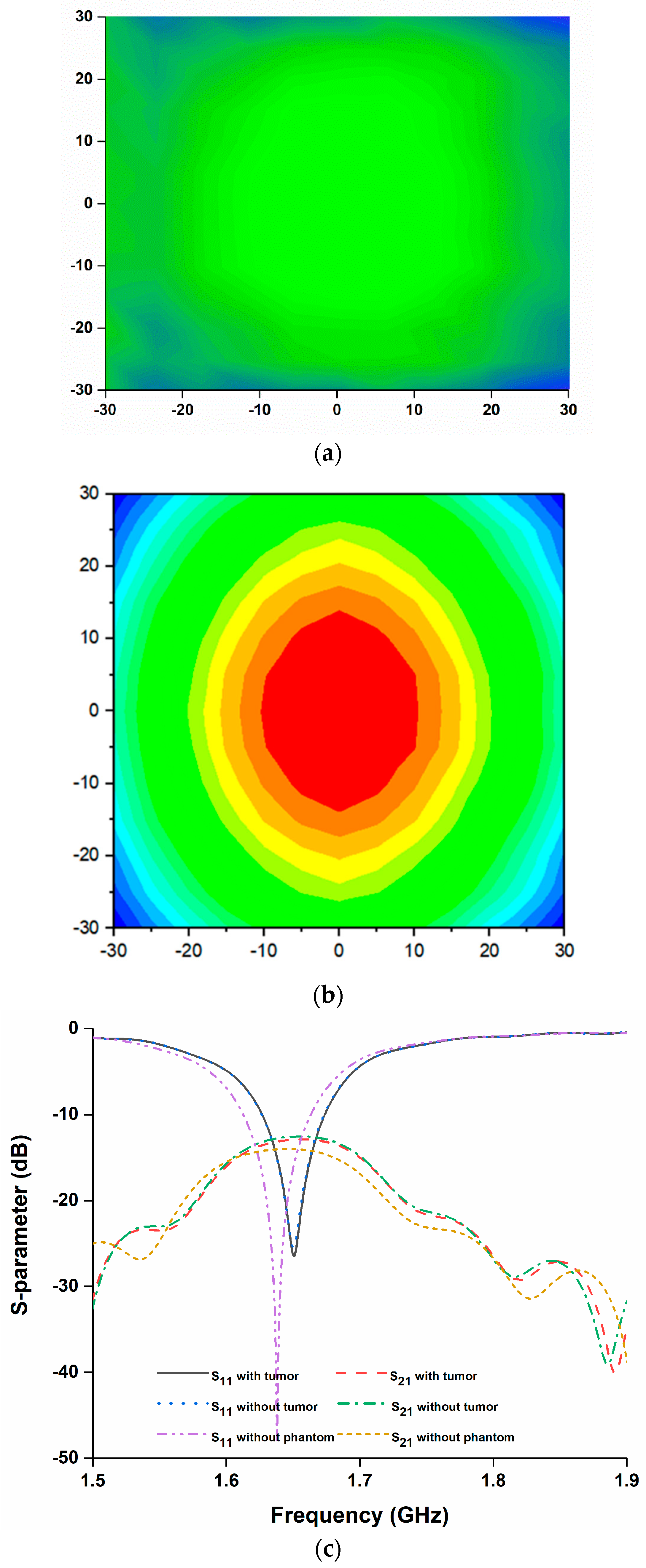

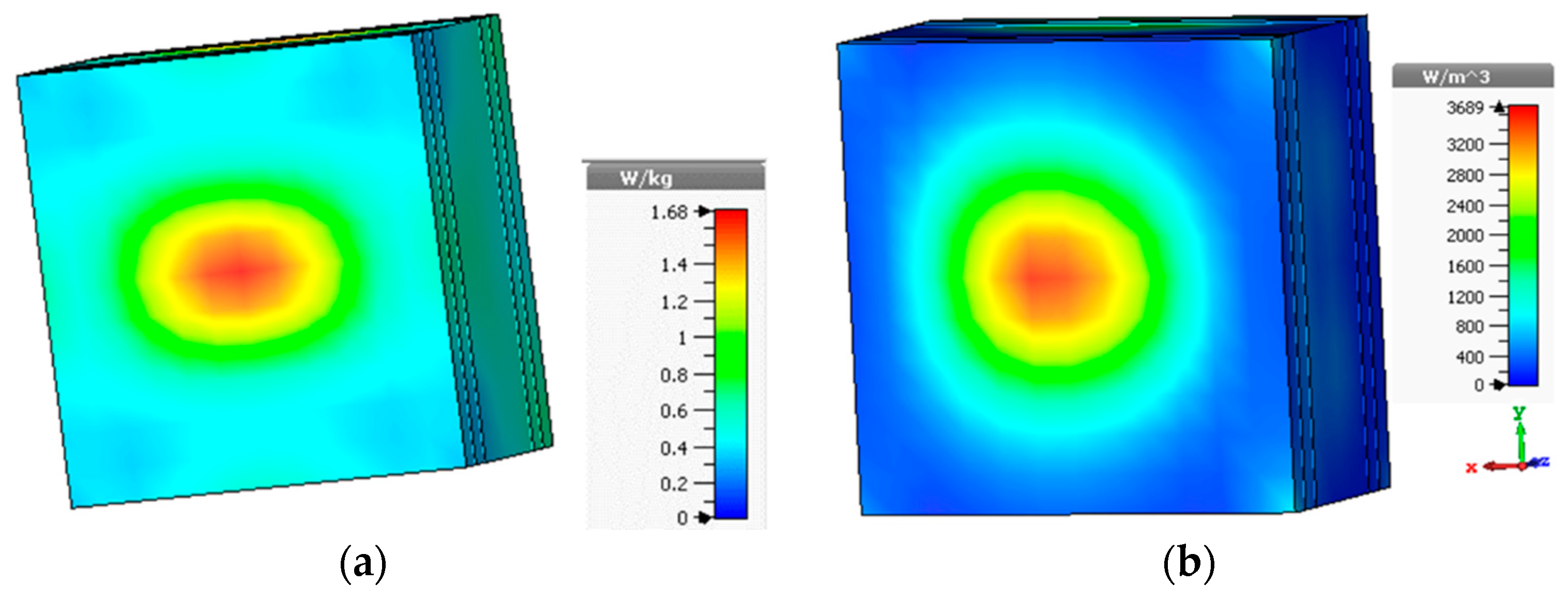


| Parameters of Breast Phantom | Value |
|---|---|
| Dimension | 16 × 8 cm2 |
| Diameter of the tumor | 10 mm |
| Number of layers | 4; air, skin, breast tissue and tumor |
| Skin permittivity | 38 |
| Skin conductivity | 1.49 S/m |
| Skin layer thickness | 2.5 mm |
| Maximum width of breast tissue | 8.75 cm |
| Breast tissue permittivity | 5.14 |
| Breast tissue conductivity | 0.141 S/m |
| Refs. | Antenna Type | Size (mm) | Op. Freq. (GHz) | Gain (dB) | Directivity | Remarks |
|---|---|---|---|---|---|---|
| [7] | Substrate based 3D | 50 × 34 × 25 | 1.41–3.57 | 2.6 dB | Almost omnidirectional | Low in gain and the radiation pattern is not unidirectional which are key requirements. Moreover, Design is expensive substrate based. |
| [10] | FR4 substrate based folded dipole | 80 × 20 × 10 | 1.1–2.2 | 4.6 dB | Almost omnidirectional | Design is complex due to integration of substrate and copper plate. Substrate is expensive. Radiation pattern is not unidirectional. |
| [19] | Lens-loaded Vivaldi | 110.3 × 100 × 1.6 | 1–14 | <3 dB at lower freq. (2 GHz) | Almost omnidirectional | Large in dimension. Gain is low at lower microwave frequency with omnidirectional radiation. |
| [20] | Vivaldi | 45 × 53 | 2.7–7 | <2 dB in lower freq. | Unidirectional | Low in gain and height of the Vivaldi type antenna could be an issue while placement in imaging system. Substrate is also expensive. |
| [21] | Dipole | 60 × 60 × 76.38 | 1–4.2 | Peak gain 6.2 dB at 4 GHz, gain <3 dB at lower freq. (2 GHz) | Omnidirectional | Height is too high, complex design and the radiation pattern is not unidirectional. |
| [23] | Patch | Not specified | 2.43–2.46 | Not specified | Unidirectional | Obtained unidirectional properties. Only computational results presented, measured results of the designed antenna unavailable. |
| Proposed | Modified PIFA | 70 × 60 × 10 | 1.55–1.68 | 4.5 dB | Unidirectional | Unidirectional radiation with high gain and efficiency in low frequency for sufficient signal penetration. |
© 2018 by the authors. Licensee MDPI, Basel, Switzerland. This article is an open access article distributed under the terms and conditions of the Creative Commons Attribution (CC BY) license (http://creativecommons.org/licenses/by/4.0/).
Share and Cite
Islam, M.T.; Ullah, M.A.; Alam, T.; Singh, M.J.; Cho, M. Microwave Imaging Sensor Using Low Profile Modified Stacked Type Planar Inverted F Antenna. Sensors 2018, 18, 2949. https://doi.org/10.3390/s18092949
Islam MT, Ullah MA, Alam T, Singh MJ, Cho M. Microwave Imaging Sensor Using Low Profile Modified Stacked Type Planar Inverted F Antenna. Sensors. 2018; 18(9):2949. https://doi.org/10.3390/s18092949
Chicago/Turabian StyleIslam, Mohammad Tariqul, Md. Amanath Ullah, Touhidul Alam, Mandeep Jit Singh, and Mengu Cho. 2018. "Microwave Imaging Sensor Using Low Profile Modified Stacked Type Planar Inverted F Antenna" Sensors 18, no. 9: 2949. https://doi.org/10.3390/s18092949





